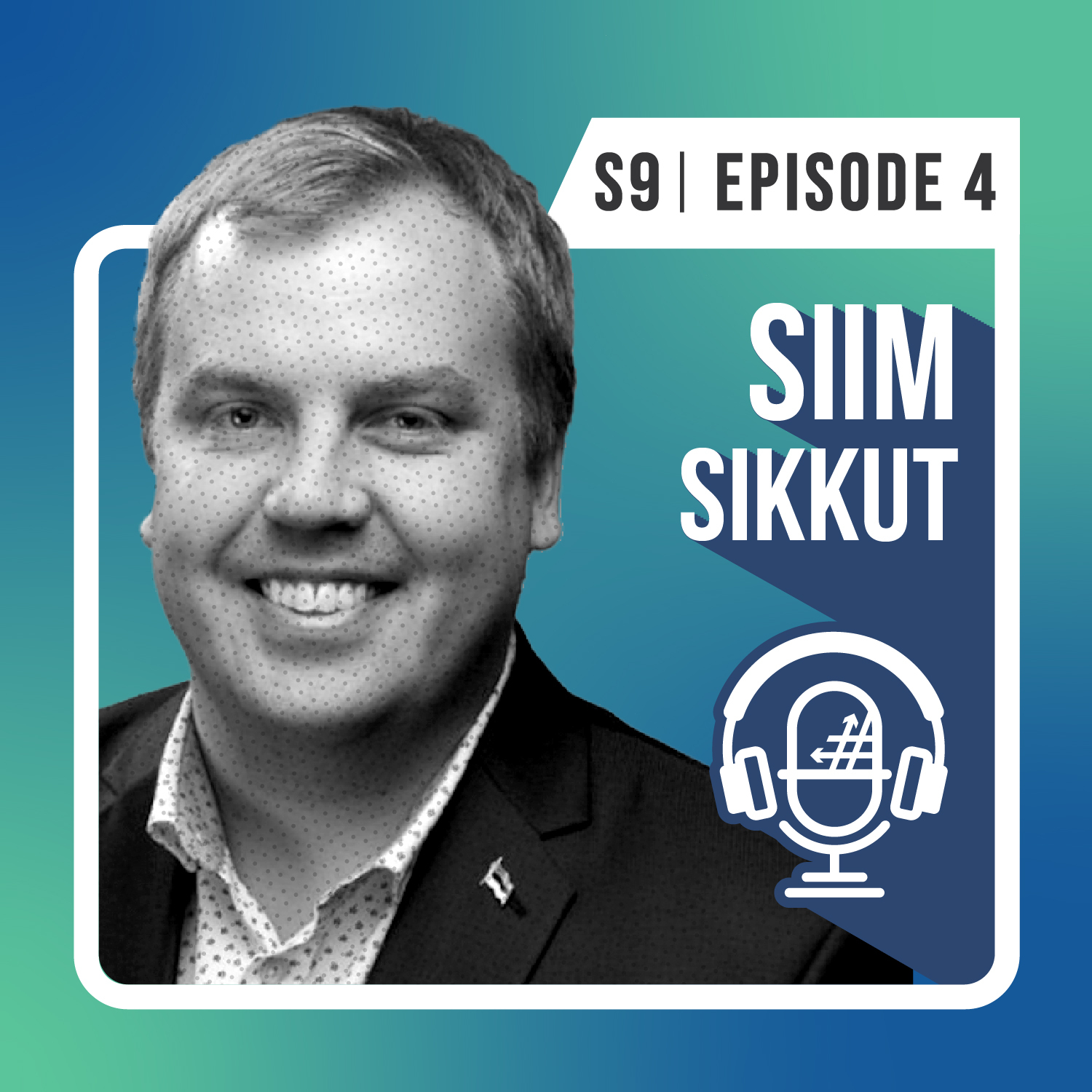S2 E4: Microsoft Teams at Global Franchise Food Chain with Jaime LaPorte

Wonder how global companies roll out their technology projects?
Find out how Jamie LaPorte, Microsoft Service Adoption Specialist and Office 365 Solutions Architect with a Fortune 500 company, and her team managed a global rollout of Teams in one of the largest companies in the world.
Get inspired at Jamie’s enthusiasm and learn what her advice is to make #shifthappen!
In this episode:
Her story
In college I took courses around the arts and creative design. And so, I really started thinking that I would do design, until I found out that it wasn’t challenging enough intellectually for me. I switched into technology and found that creativity came with that. So, it’s the best of both worlds for me.
And what I actually I noticed right when I started working with SharePoint doing administration and consulting, is that it’s really underestimated how creative the tech industry can be, especially with SharePoint and Office 365 intranets and all that. So that was huge for me.
Microsoft Teams rollout with a global company
I work with a Fortune 500 company, so it’s global and everyone’s probably heard of it, and that’s why it was so exciting to find out right away that I’ll be part of the project. They actually told me on my first day on the assignment that I’d be a hundred percent allocated to the team’s project. That was the first day of a crazy journey. I was so excited. My first thoughts were, “I’m just ready to dive in. I’m ready, let’s do this.” And it’s funny because I didn’t actually get access to Teams until three weeks later. So, I was dying in anticipation this entire time.
How it started
Normally with some shadow IT tools like Slack and WhatsApp, you have to go out and go to those users and lure them in with Teams and say, “Hey, you know, here’s this great tool. Let’s use it instead.” But with them it was the opposite.
The idea was directly from Global CTL, the global technology department. So, the global IT division came to us, the Enterprise Content and Collaboration team, and said, “Hey, we have all these tools that we’re using to communicate across the globe with our team. And we heard of this great tool called Microsoft Teams. We want it. So let’s get this rolling and get on it right away.” That was part of the reason why on my first day, they’re like, “We need her a hundred percent on Teams because they came to us.”
The project
In the organization, the team that owned all of Office 365 was split into two teams within one department. The team I was on was enterprise communication and collaboration, so we handle SharePoint, OneDrive, Yammer, and a few others. And then there was the end user computing team that handles the laptop images. They own Exchange and Skype for Business.
As part of this project, we knew that a partnership had to happen between those two teams from the beginning. So, we worked together throughout the whole duration of the project and it worked out great. We eventually expanded to about 50 pilots.
Piloting the rollout
Like I was saying, there were 50 pilots spanning among probably 350 or so people and that reflected in our use cases as far as three different specific scenarios that we would use Teams’ core:
- Teams for project collaboration.
- For organizational functions between departments and teams.
- Finally, for workstream modernization, which is your dev tools integration like JIRA HR tools that these third-party integrations would then leverage for bots and others.
We know that the way people use Teams is completely different for a project than it is for a department. For the pilots, we piloted all these teams as organizational teams—departments or project teams. In a department, you have sharing work from home, where you have roadmaps, et cetera, but you’re not really doing that core project work together, which is what Teams thrives in and what it makes so much easier.
Unfortunately, we didn’t get to pilot project Teams because we didn’t have time to do that. So, it was a matter of looking at all the documentation that we had already made and planned accordingly.
Measuring success
When thinking about the success measures, I put together a few different documents on KPIs. Broken down into three benchmarks, it really reflects our use cases. Eventually with Teams, we wanted to make sure that all these barriers with lack of adoption and collaboration was removed or at the very least reduced. That was important to our success criteria.
We also wanted to enable teamwork from anywhere. As a global organization, teamwork between cross-functional departments and across the globe is challenging at times. So, with Teams, we wanted to make it possible to work on your phone and on your laptop and not have any segmentation so our people would be able to make decisions faster and get work done from anywhere.
For the qualitative measurement, we used three different pulse surveys when we were piloting, while the quantitative measurement is through usage reports. We wanted to combine all those together and break that down into specific goals.
On provision:
In the past, it had been very difficult for us to have a provisioning process because there’s multiple hoops that people have to jump through in order to get their work done. So, with this project I had proposed for three months, we would have a new provisioning process that would not only give IT that reassurance that everything’s safeguarded and protected, that there’s policies, regulations, and it’s all backed up from a governance perspective, but also make users feel like they’re empowered, and they can get what they need when they need it.
So, in our provisioning process, we were really pushing for self-service and enablement. We decided on letting the users be able to create their own teams, except for consultants and contractors, and we made that happen through naming conventions, expiration, renewal, all those governance pieces that Azure AD lets us do.
What’s next?
This project was rolled out in phases. Phase one was using Teams as a project collaboration tool and a replacement for Skype for Business. So that’s about planning organic growth and deployment to all the different markets and countries.
The second phase was using it for meetings. And then finally, looking into shifts and deploying it to first-line workers. It’s a little bit more complicated when you get to the first-line worker perspective, because they are a company where they have franchises. And so technically that’s not really even owned by them. It gets complicated when you look at it from that perspective, but they have a goal to eventually expand Teams and give it to their first-line workers. However they need to do that, whether it’s working with the restaurant owners or other things like that, that’s on their goal list for sure.
How to make #ShiftHappen
Go and set up stakeholder interviews. Not only with Teams, but this also applies to any Office 365 or technology project. Set up 15 minutes and have a set list of questions to dig into what their core processes are, what tools they use. Every single one of us has different processes and things that we do every day. So those stakeholder interview questions really dig into that. And you can use those in so many ways if you have enough information across all the departments and countries.
When you’re planning your use cases, make it individual to them. You can also use that for targeted training for specific departments if they’re not using a particular tool and highlight how it would benefit them specifically. I found that’s one of the most important things.
Today’s takeaway from Jamie:
“Instead of IT making all of the decisions and sticking to the saying, ‘Throw it out there and see what sticks,’ making shift happen in the modern workplace is actually going back to the drawing board and tackling business first before the technology.”
Subscribe where you get your podcasts! Search for “#ShiftHappens” in your favorite podcast app.
With over 20 years of business and technology experience, Dux has driven organizational transformations worldwide with his ability to simplify complex ideas and deliver relevant solutions. He serves as the Chief Brand Officer of AvePoint who has authored the LinkedIn Learning course How to Build Your Personal Brand, the book SharePoint for Project Management, as well as numerous whitepapers and articles. As a public speaker, Dux has delivered engaging, interactive presentations to more than 25,000 people at leading industry events around the world. He also hosts the modern workplace podcast #shifthappens that focuses on how leading organizations navigated their business transformation journey. Dux advocates tirelessly for inclusion, using technology for good, and philanthropic initiatives. Connect with him: http://dux.sy



